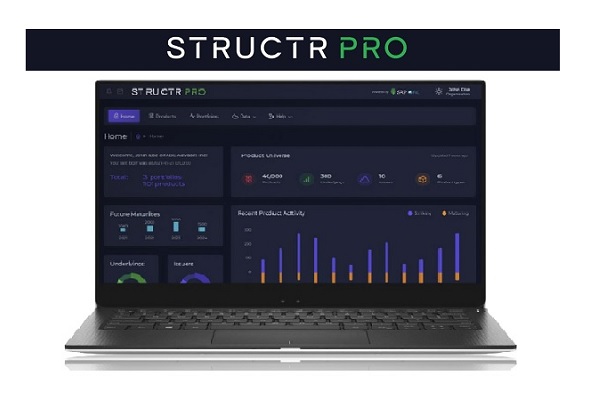Investor demand for yield paying investments remains as high as ever with interest rates at near zero levels and equity markets in a very uncertain state. Because of this the market is always looking for solutions to provide enhanced yield at reasonable risk levels. Any investment that provides income in excess of the risk-free rate must by definition be taking some risk to that income stream or to capital, or to both.
Auto-calls have long been popular in structured products markets in either income or growth versions, because of their attractive pricing and good track record. The first Auto-calls issued many years ago were generally growth products that pay an accumulated (“snowball”) return at the time that the product auto-calls. While this construction is still popular it does not provide any cashflows until the product has been called and so is not particularly appropriate for income seeking investors since that would place a heavy reliance on repeated successful early calling.
Income variations within Autocalls
The always inventive structured products market has over time created three variations of income paying Auto-calls. The first of these is the fixed income version paying a known income at a regular frequency (such as annually or quarterly) until the product calls. This makes it a hybrid between a snowball type Auto-call and a Reverse Convertible.
The next variant is known as the Phoenix Auto-call and sets a coupon barrier level above which the underlying needs to be at each coupon date for the relevant coupon to be paid. Typically, this barrier will be at a level between 50% and 80% of the initial underlying level and may be set the same as the capital European or American barrier level. Because of the contingent nature of these coupons a higher headline rate can be achieved compared to the fixed income case, other factors being equal.
Introducing the memory feature
The Phoenix Auto-call still accounts for a large sector of the market but an increasing number of products now employ a memory feature. This variation means that if any coupon is missed on the next future occasion that the coupon condition is satisfied all coupons that have been missed are paid on that date, hence “memory” of coupons that need to be paid. In product termsheets this is often stated mathematically as paying number of coupon period minus total number of coupons paid to date. So, if for example on the fifth payment date the coupon condition is satisfied but only two coupons had previously been paid, then three coupons would be paid on this date. It can be easily seen that the memory feature makes payments more likely than the standard Phoenix type, but still less than the fixed income case. Therefore, the coupon that could be achieved lies between these two values.
The memory variation is popular not only because of the chance to catch up coupons but also because finishing above the coupon barrier on the final date guarantees that all coupons will have been paid in total. This reduces the product’s dependence on market behaviour through its lifetime. This same property is also true when the product calls, all coupons will be automatically made good at that point since the call level will always be set at least as high as the coupon barrier.
Examples in France, US and UK
In France, issuance of Phoenix memory notes increased significantly in 2019, almost doubling from the year before, according to www.structuredretailproducts.com, however the regulator still classifies the product as complex and places restrictions on sales. The product has also been seen in the US with examples from Citi and others, and in Italy by Leonteq.
In the UK in recent months, two plan managers (distributors) have also brought out memory Auto-calls. These are IDAD with a product issued by Goldman Sachs, and Causeway Securities with an offering issued by Morgan Stanley. Both products use the worst-of mechanism to generate more yield, The FTSE-100, EuroStoxx-50 and Nasdaq-100 in the case of IDAD, and the FTSE-100 and S&P-500 from Causeway.
By way of illustration of the possible variation of coupon levels, we can examine the IDAD product. This had a memory coupon of 6.4% p.a. over a four year term, paid quarterly, with a coupon barrier of 80% (and a European capital barrier of 60%).
Sourcing pricing from FVC Nextval service (www.future.co.uk/nextval) we can examine the indicative coupon levels that could be achieved at that time for this product solving for the same asset price as the actual product that came to market.
| Product variation | Annual coupon (%) |
| Fixed Income | 3.93 |
| Memory | 6.4 |
| Phoenix | 8.14 |
| Snowball | 10.84 |
This table shows the variations in headline yields, with the snowball being the highest as expected because no income is paid until calling occurs. Even within the true income variants, there is a big difference with the memory version providing an income level between the fixed income and the Phoenix.
| Year | Probability (%) | Average simple annualised return (%) | |||
| Fixed | Memory | Phoenix | Snowball | ||
| 1 | 49.24 | 3.93 | 6.4 | 8.06 | 10.84 |
| 2 | 15.02 | 3.93 | 6.4 | 7.41 | 10.84 |
| 3 | 6.07 | 3.93 | 6.4 | 6.3 | 10.84 |
| 4 - Capital return | 17.98 | 3.93 | 4.84 | 3.69 | 2.4 |
| 4 - Capital loss | 11.69 | -10.53 | -13.04 | -13.02 | -14.46 |
Table 2 shows the range of outcomes grouped by years, with the final (4th) year divided between capital return and capital loss which is defined by whether the barrier is breached. The simulated probability of each event is shown (source: FVC), these are the same for all variations because they all have the same Auto-call schedules and therefore probabilities.
We can see that the fixed coupon case pays the lowest coupon but performs the best in the capital loss row, and that the memory version steadily gains over the phoenix and snowball variations over the longer horizon outcomes. The different variations can also be thought of as a spectrum of risk, reliability of income and total return performance. As is to be expected, the risk levels follow the order of coupon amounts, with the memory variation being the lowest risk except for the fixed income version. The reliability with which income is paid also follows this same order.
Presenting breakdowns for Auto-calls can be tricky because of the number of components. In this table the percentage of each row is important and also it should be remembered that when comparing annualised returns they take on more significance for longer time points because they show bigger cashflow differences.
In conclusion, the four variations offer significantly different headline yields but also have very different risk profiles and scenarios under which income is paid. For many investors the memory variation will be a good trade-off between maximum income that can be earned and the chance of earning that income, particularly under volatile market conditions where a recovery in index levels will allow the memory property to catch up any missed income as a result of market falls.
Tags: Valuations Product types Structured EdgeA version of this article has also appeared on www.structuredretailproducts.com
Image courtesy of: Adam Tinworth / unsplash.com













